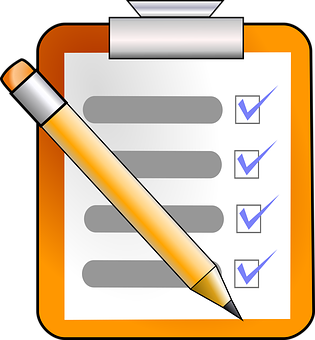Are You Ready to Update Your Maryland Emergency Preparedness Plan (EOP)?
 Emergencies rarely send a save-the-date—and as Maryland child care providers, you know that being prepared isn’t just a requirement, it’s the ultimate act of care. From unexpected storms sweeping across the Chesapeake Bay to a #toddler who decides today is a great day to test gravity, having a solid Emergency Preparedness Plan (EOP) keeps everyone #safer and calmer.
Emergencies rarely send a save-the-date—and as Maryland child care providers, you know that being prepared isn’t just a requirement, it’s the ultimate act of care. From unexpected storms sweeping across the Chesapeake Bay to a #toddler who decides today is a great day to test gravity, having a solid Emergency Preparedness Plan (EOP) keeps everyone #safer and calmer.
But let’s be honest: updating your EOP can sometimes feel like wrestling with a three-year-old who skipped #nap time. So, let’s make this fun, simple, practical, and Maryland-specific—because keeping kids safe is serious, but learning about it doesn’t have to be.
🌪️ Why Do Maryland Providers Need a Strong EOP?
Maryland’s child care regulations require every licensed program—family child care #homes and centers—to maintain an up-to-date Emergency Preparedness Plan. But beyond requirements, your EOP becomes your program’s superhero cape during:
-
Hurricanes and flooding on the coast
-
Tornado warnings in summer
-
Winter storms and power outages
-
Medical emergencies
-
Fire or hazardous materials situations
-
Unexpected community threats
-
Lost child scenarios
When things get chaotic, your EOP steps in and says:
“Relax. We’ve already planned for this.”
📝 What Should Be in Your Maryland EOP?
Think of your EOP as a guidebook that answers:
✔️ What’s happening?
Identify emergencies most likely in your location—storms, power outages, medical situations, etc.
✔️ What do we do first?
Assign roles:
-
Who grabs the #emergency kit?
-
Who gathers the children?
-
Who manages communication?
✔️ Where are we going?
Maryland EOPs require defined evacuation routes, safe meeting areas, and off-site relocation spots.
✔️ How do we contact families?
Phone trees, group messages, backup contacts—because emergencies don’t respect cell tower signals.
✔️ How do we support children emotionally?
Emergency drills can be scary. Calm voices, clear directions, and simple explanations help children feel secure.
🎒 Make It Hands-On: Get Kids Involved!
Children learn best through #play, and #emergency- #preparedness is no different. A great tool to use is the Disaster Preparedness Activity Book for Children
With coloring pages, fun prompts, and simple #safety messages, it helps children understand emergencies without fear.
📚 Level Up Your Skills: Recommended Courses for Providers
Your EOP is only as strong as your team’s training. Two popular ChildCareEd courses can help:
⭐ Emergency and Disaster Preparedness
Learn how to create and implement a complete emergency plan that meets Maryland licensing requirements.
⭐ First Aid & CPR (Blended Training)
Respond with confidence during medical emergencies—a must-have skill for all providers.
🔍 Need Inspiration?
Check out the article “Ready and Resilient: The Importance of Emergency Preparedness”
It gives a helpful overview of why emergency planning matters and how being prepared empowers both children and providers.
🔄 When Should You Update Your EOP?
Maryland recommends updating your plan:
-
Annually
-
Whenever you change your #staff
-
When you change facility layout or add new rooms
-
When licensing rules change
-
After any drill or real emergency where improvements are needed
Think of it like your fall leaf clean-up—you might not want to do it, but you’ll be so glad you did once the next storm rolls in.
🚀 Tips to Make Updating Your EOP Easy
1. Break it into small pieces.
You don’t need to redo the whole plan at once. Review one section each week.
2. Make it a team effort.
Staff input #leads to stronger plans—and better preparedness.
3. Practice with purpose.
Monthly drills aren’t just a requirement; they’re confidence-building moments.
4. Keep copies everywhere.
At the front desk, in the emergency kit, on your phone—and at home.
5. Celebrate after drills.
Stickers or high-fives go a long way to help children associate safety with success.
❤️ Final Thoughts
Creating and updating your Maryland Emergency Preparedness Plan doesn’t have to feel like a chore. With the right tools, a little creativity, and ongoing training, you’ll build a program that’s ready for anything—rain, shine, snow, or surprise toddler acrobatics.
And remember: The more prepared you are, the calmer the children will be. Your confidence becomes their comfort.
Follow us @ ChildCareEd Instagram– Preparing You Today for a Safer Tomorrow!
- MSDE to Strengthen School Safety
- Emergency Preparedness Training
- Ready and Resilient: The Importance of Emergency Preparedness
- Essential Resource for Child Care Providers: Free Emergency Preparedness Plan
- Emergency Preparedness in Childcare: Creating and Practicing Safety Protocols
- Frosty’s First Aid Kit: Emergency Preparedness Tips for Educators During the Holidays
- Emergency Preparedness Training Every Childcare Provider MUST Know
- What Parents and Educators Need to Know About Child Safety
- Basic Health and Safety: The Must-Know Training for Childcare Professionals
- Basic Health and Safety in Childcare: A Complete Guide for Providers
- Emergency Preparedness Training for Childcare Providers: Keeping Kids Safe in a Crisis
- Stay Ready: First Aid and Emergency Procedures in Early Childhood Education
- From Tornadoes to Lockdowns: Prepare Your Childcare Center for the Unexpected
- Your Emergency Go-Bag: What Every Childcare Provider Needs on Hand
- When Seconds Count: Mastering Emergency Preparedness
- 🌪️Fire Drills, Flashlights & Fast Thinking: Why Emergency Preparedness Is a Must
- Emergency Preparedness in Child Care: What Every Provider Should Know
- Are You Ready to Update Your Maryland Emergency Preparedness Plan (EOP)?